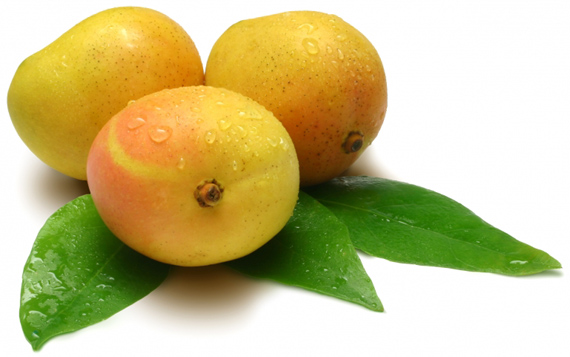The mango, is a tree belonging to the family of Anacardiacee, a native and cultivated in all areas of tropical. In the Philippines, the top producers of mangoes are the provinces of Pangasinan (30%), Isabela (15%), Negros Occidental, Zamboanga del Norte, and Nueva Vizcaya.
Mango is a fruit type drupa, varied coloring: yellow, orange and red, more roseada side who suffers direct sunlight and more yellowish or greenish on the side that receives indirect sunlight. Normally, when the fruit is not yet ripe, its color is green, but it depends on the culture. The pulp is juicy and very tasty, in some cases fibrous, sweet, enclosing a single seed in the center large. The sleeves are used as food in many different ways, but is most consumed fresh.
It is believed that the sleeve is the most consumed fresh fruit in the world. It was introduced in California (Santa Barbara ) in the 1880s.
A fresh mango contains about 15% sugar, up to 1% protein and significant quantities of vitamins, minerals and antioxidants, which can contain vitamin A, B and C .
Due to the high amount of iron it contains, the sleeve is indicated for treatment of anemia and are beneficial for pregnant women and during periods of menstruation. People who suffer from muscle cramps, stress and heart problems can benefit from high concentrations of potassium and magnesium that may also help existing to those who suffer from acidosis. There are also reports that the sleeves soften the intestines, making digestion easier. It is also used in lung diseases (bronchial asthma, bronchitis and catarrhal cough), inflamed gums (gingivitis, sores in the mouth and around the lips). Decubitus ulcers (bedsores), varicose ulcers.
Mangoes can be cultivated in tropical and subtropical climates. They should be planted in an area with good drainage and a slightly acidic soil. They should be watered regularly when young, however, to reach maturity, should be watered at intervals between 10 and 15 days. About 4-5 months after flowering, mangoes are ripe. When the sleeve has arrived at its final size and is ready to be harvested, it becomes easy to be taken of the foot, with a simple tug.
~~~
~~~
Mango is a fruit type drupa, varied coloring: yellow, orange and red, more roseada side who suffers direct sunlight and more yellowish or greenish on the side that receives indirect sunlight. Normally, when the fruit is not yet ripe, its color is green, but it depends on the culture. The pulp is juicy and very tasty, in some cases fibrous, sweet, enclosing a single seed in the center large. The sleeves are used as food in many different ways, but is most consumed fresh.
It is believed that the sleeve is the most consumed fresh fruit in the world. It was introduced in California (Santa Barbara ) in the 1880s.
A fresh mango contains about 15% sugar, up to 1% protein and significant quantities of vitamins, minerals and antioxidants, which can contain vitamin A, B and C .
Due to the high amount of iron it contains, the sleeve is indicated for treatment of anemia and are beneficial for pregnant women and during periods of menstruation. People who suffer from muscle cramps, stress and heart problems can benefit from high concentrations of potassium and magnesium that may also help existing to those who suffer from acidosis. There are also reports that the sleeves soften the intestines, making digestion easier. It is also used in lung diseases (bronchial asthma, bronchitis and catarrhal cough), inflamed gums (gingivitis, sores in the mouth and around the lips). Decubitus ulcers (bedsores), varicose ulcers.
Mangoes can be cultivated in tropical and subtropical climates. They should be planted in an area with good drainage and a slightly acidic soil. They should be watered regularly when young, however, to reach maturity, should be watered at intervals between 10 and 15 days. About 4-5 months after flowering, mangoes are ripe. When the sleeve has arrived at its final size and is ready to be harvested, it becomes easy to be taken of the foot, with a simple tug.
~~~
~~~



No comments:
Post a Comment